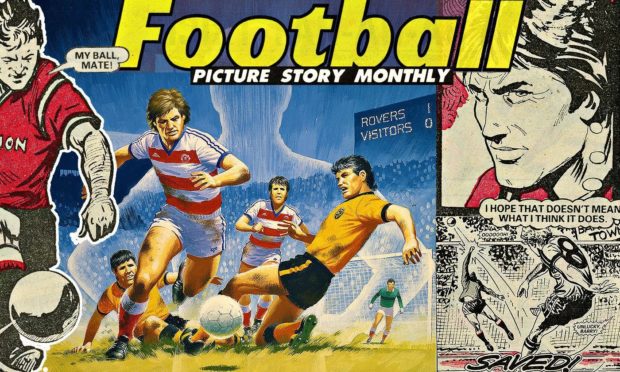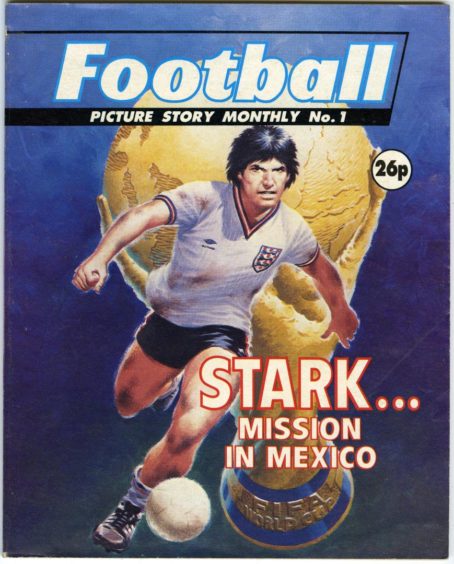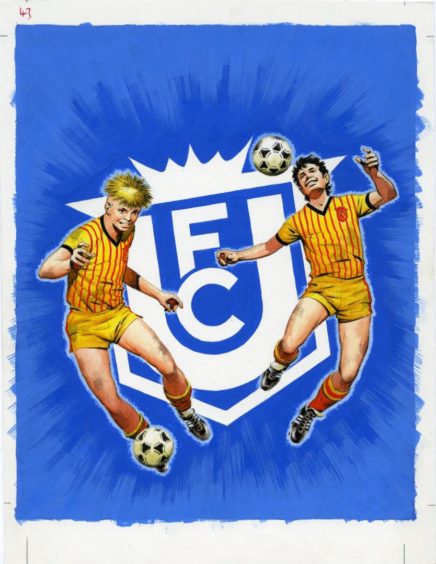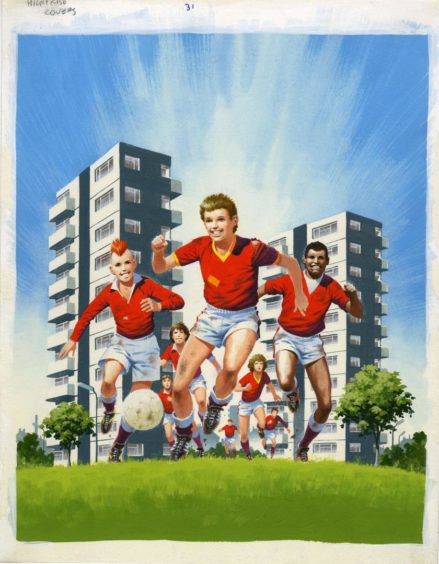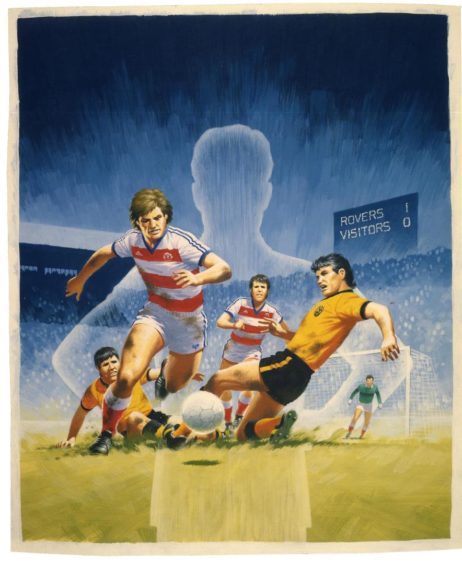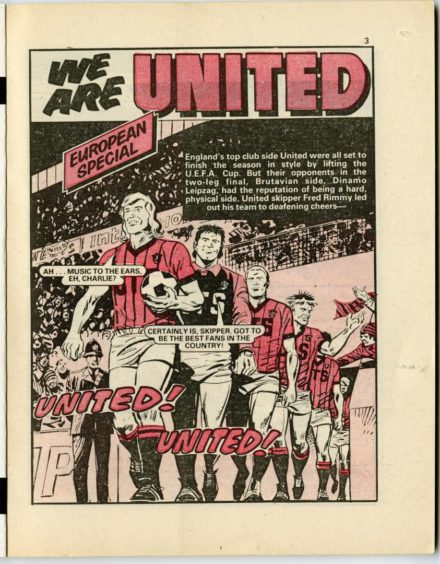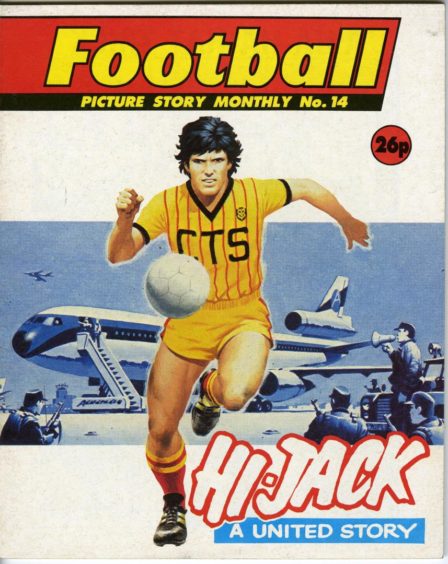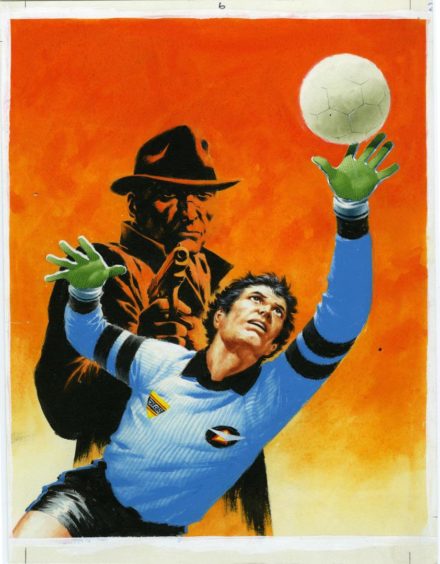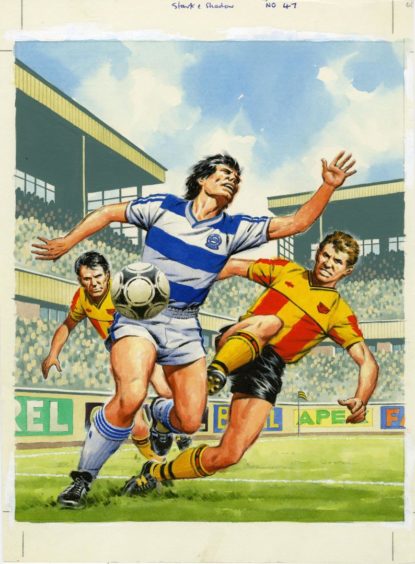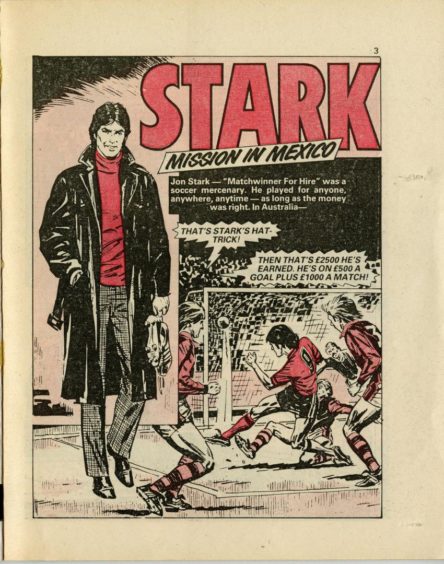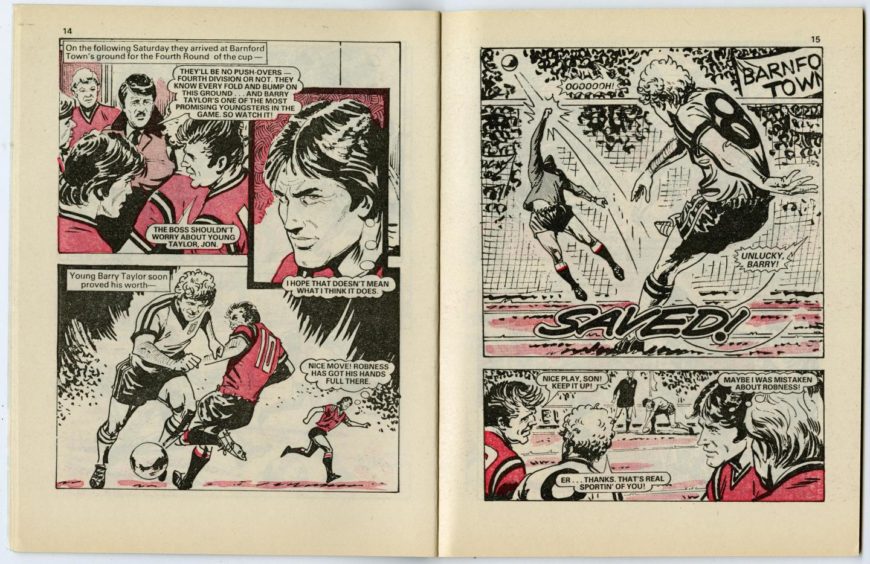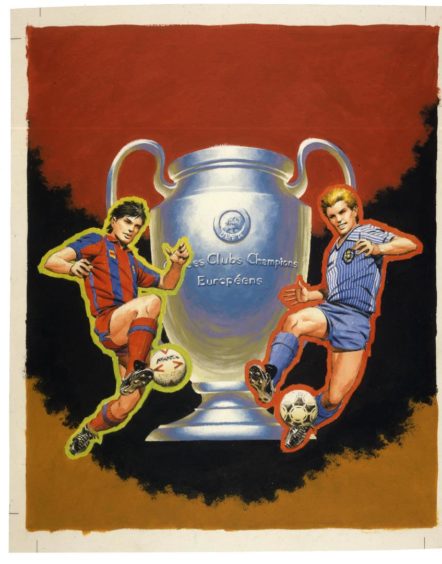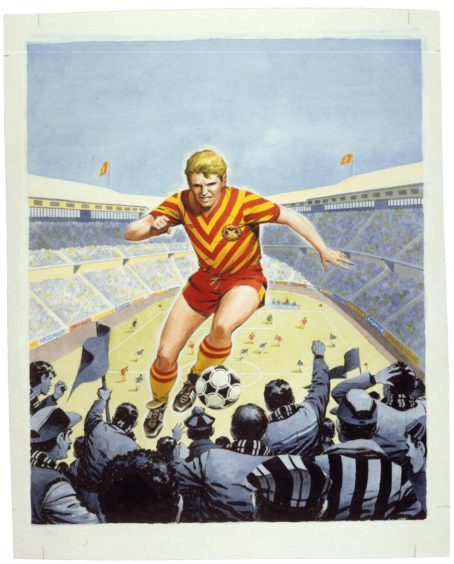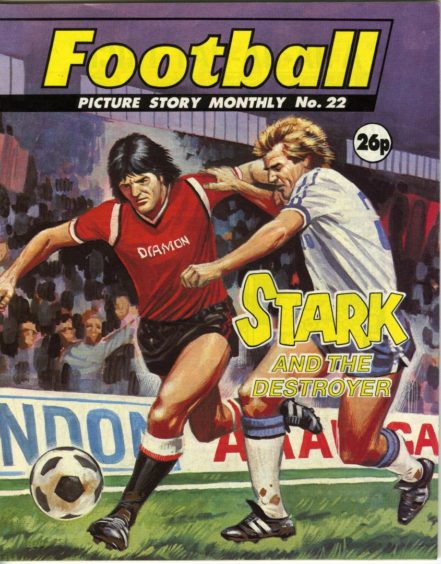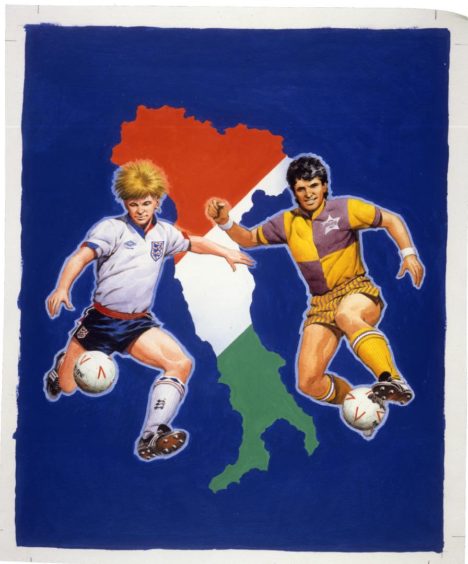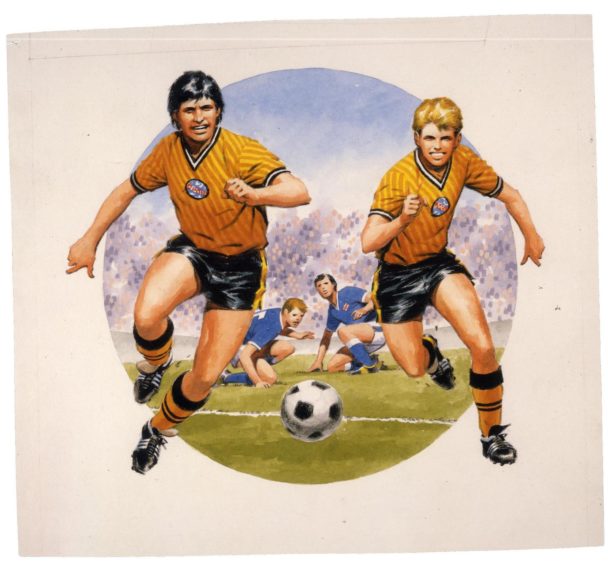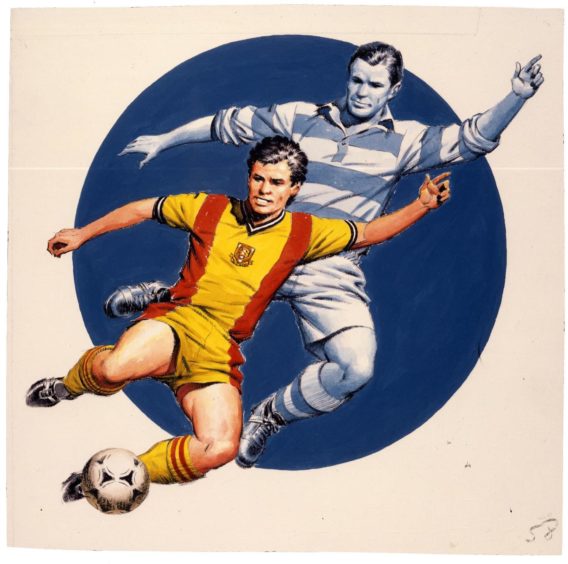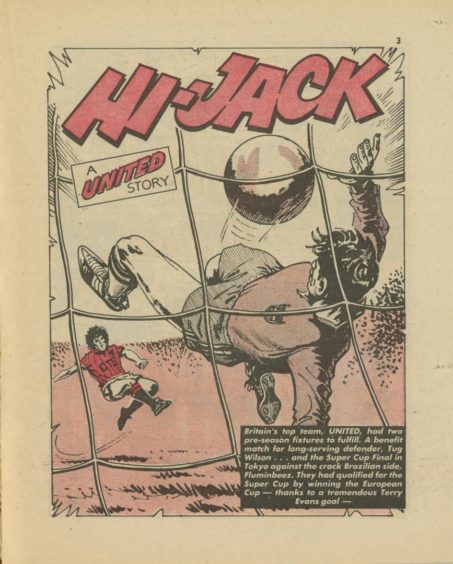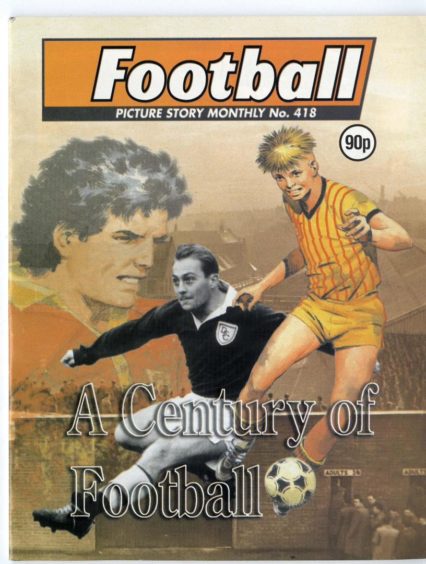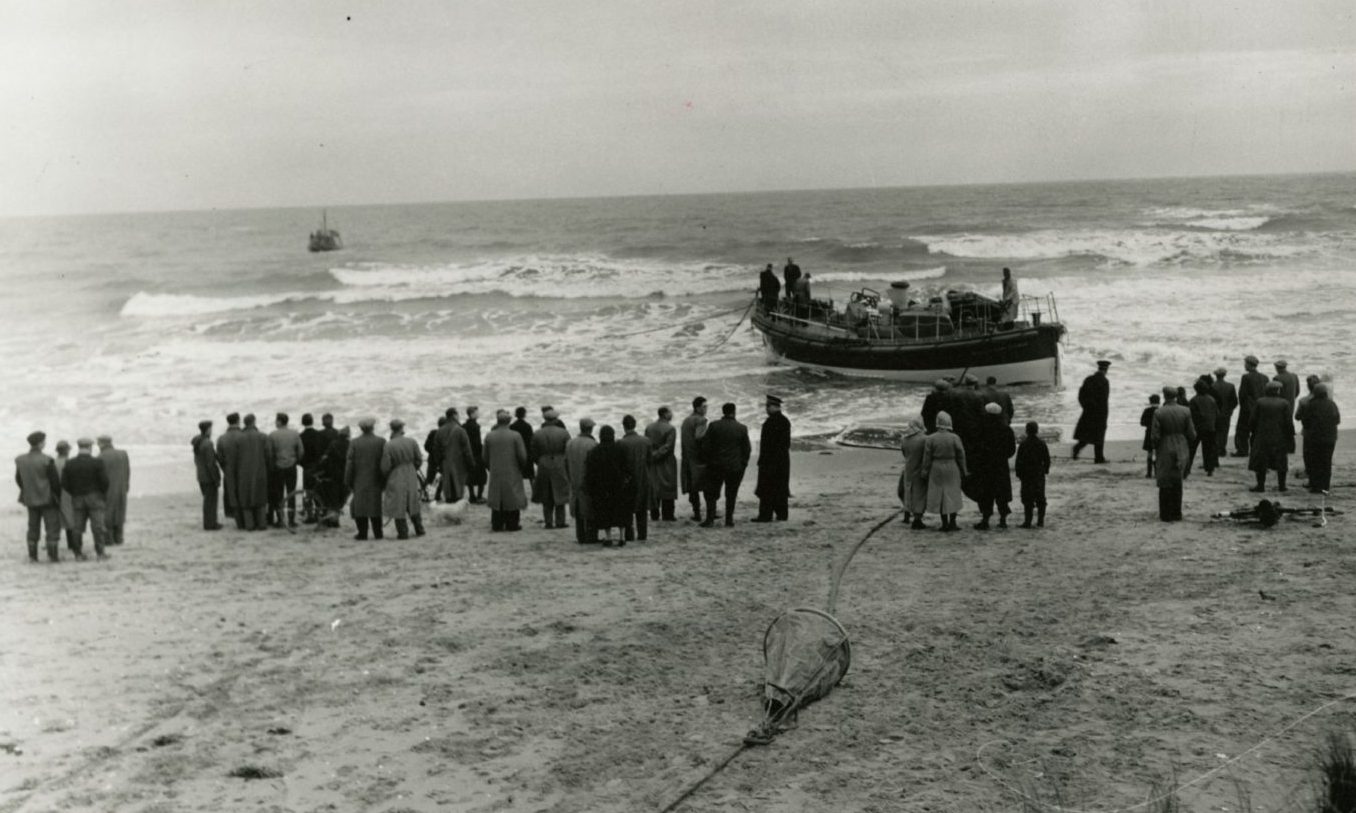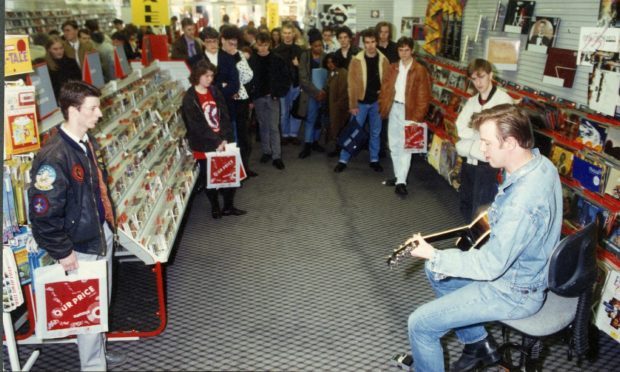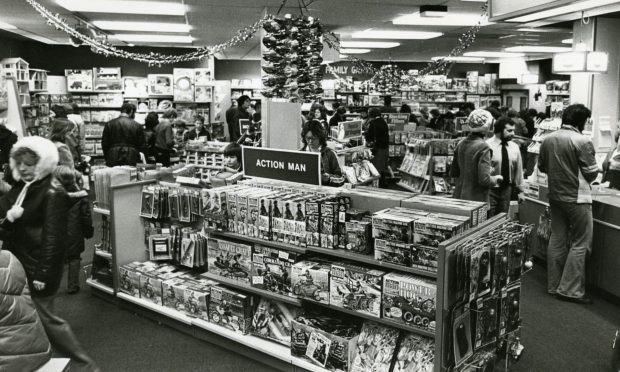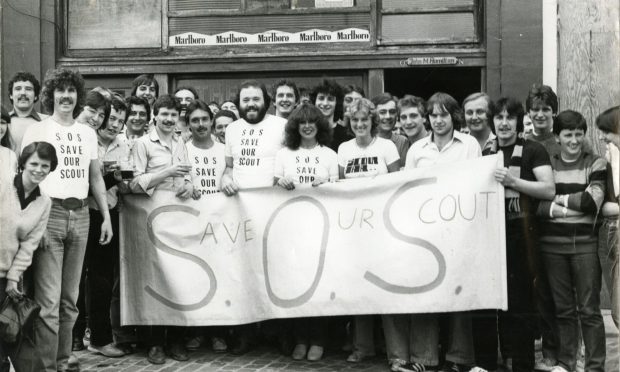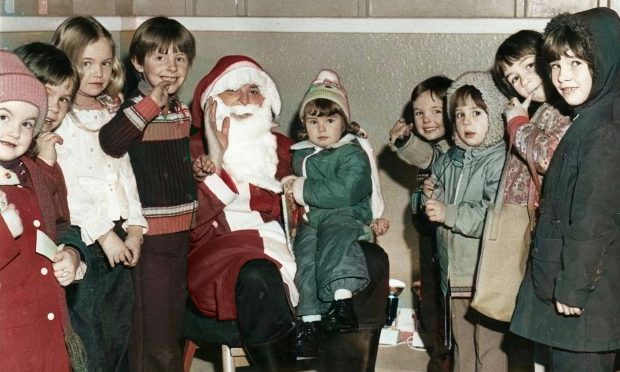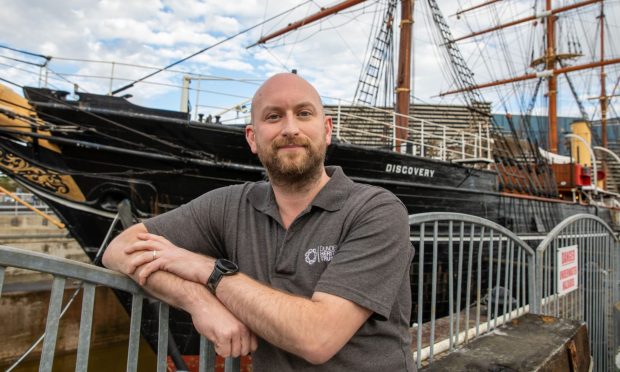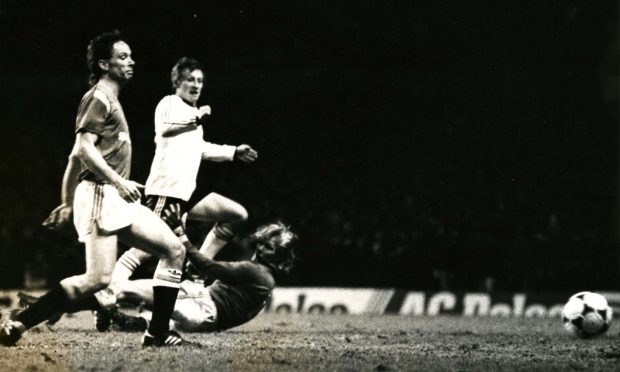Football Picture Story Monthly was the pocket-size comic which brought the beautiful game to life in black and white.
FPSM launched during the 1986 World Cup in Mexico and writers Martin Lindsay and Bill Graham imagined a football landscape where anything was possible.
This was a world where the underdog could triumph against the odds and a young player always had the chance to be spotted by a scout and make it to the top.
A place where a vain, self-absorbed and selfish player could be healed by the embrace of a local community after being forced to move to a smaller club.
Martin and Bill loved the game and that passion jumped off the pages.
The stories were full of heart and the football artwork was world-class.
This was pure escapism.
DC Thomson produced 418 issues until 2003 with two stories in each edition inside a colour cover which included a picture of a footballer on the back page.
Popular storylines included Jimmy Grant, We Are United, Kline and Powell and ‘Matchwinner for Hire’ Jon Stark who picked up a £1,000 fee if his team won.
Martin said: “I think it was popular with its fan-base of young adults and adults because the stories weren’t told in a comic larger-than-life fashion but tried to be believable and reflect real-life.
“The stories were filled with good guys, bad guys, heroes, would-be heroes, bullying managers/Jurgen Klopp-type bosses, greedy chairmen and loyal fans.
“This was the world of football on a black and white page.
“The series resonated with a lot of people when first published and that popularity has endured.
“The stories, characters and artwork all still work today.”
Martin started life at DC Thomson in 1971 as the junior sub-editor on The Rover which was Britain’s last-surviving boys’ story paper which finally folded in 1973.
He earned his stripes on The Hotspur, Victor, Bullet, Scoop and The Crunch before working on Buddy, Champ and FPSM in the 1980s.
Martin and Bill put forward the idea for FPSM in 1985 and thought they stood a good chance by reviving some of the best DCT football stories in the A5 format.
Martin said: “We thought We Are United, Jon Stark and Jimmy Grant could be contemporised for an audience of both boys and adults.
“Then we had brainstorming sessions where we would submit new story ideas before doing a UK-wide round trip to meet the freelance writers and present the ideas for them to produce the finished scripts based on the existing DCT characters and the new ideas.
“These new ideas included other characters such as Kline and Powell that would go on to prove popular.
“Inspiration and lots of ideas also came from diligently reviewing the Sunday and Monday newspapers, match reports, off-the field antics of players/managers and the football TV programmes where we ‘appropriated’ incidents, characters and game highlights to weave into storylines.
“Also, both having played football from five to 55 we had tons of personal experiences and memories.
“Both of us being big football fans and the opportunity to work with the best writers and illustrators from the UK and Europe meant it was nothing but a pleasure from day one.”
We Are United was widely accepted as the best-ever storyline.
First published in Champ in 1984, the original story generated fantastic feedback from the readers with over 1,000 letters a week arriving at DC Thomson from boys wanting to appear in the story as club mascot for the day.
This popularity transferred over to FPSM with 43 United FPSM stories in total.
Martin made the switch to Syndication from FPSM in 1988 which opened up whole new worlds with bi-weekly trips to London and attending book fairs across the globe.
He said: “Both Champ and FPSM were syndicated to comic publishers across Europe and I can remember taking a phone call one Monday morning from my contact at Stabenfeldt in Norway saying his printers were desperate to find out what happened in the next instalment of the United story as we had ended the last one on a cup final cliffhanger!”
Fellow writer Bill said the process from synopsis to finished article took around 12 weeks so there was a production line to accommodate the two titles a month.
Bill said: “The process was relatively simple in that we chucked around ideas and moulded them into a synopsis which was then sent to an author.
“Once scripted the story was edited and sent to an artist who drew the story, usually in 16 page segments.
“The work was subbed and ballooned by hand before being sent to press.
“We tried to keep the stories current and vary authors and artists which is why I think it has stood the test of time and remains iconic.”
Bill said one the most iconic characters in the series was the nomadic mercenary Jon Stark who was a no win, no fee footballer.
Stark featured in the first edition of FPSM where he joins up with the England squad for the 1986 World Cup in Mexico.
The price was 26p.
“Stark was an ideal character because as football changed there were more and more ‘mercenaries’ and with Stark you could be a bit over the top,” he said.
“We all played football so we were conscious of how the game was changing at our level and even more aware of how football was changing at professional level.
“One of my favourite stories was about a talented, but lazy player who ended up at university doing a sports course because he thought he would walk it.
“But didn’t, before seeing the light and buckling down.
“Another was basically the story of Bobby Robson.
“Good, good player from Newcastle who never played for Newcastle, but managed them latterly.
“There are a few other great stories – near the end we had a tale about a cup final ball and another about a football ground.
“They were great tales.”
Bill said the time he worked on FPSM was full of happy moments and some of the best were getting a mate’s name into a story!
“There were a lot of brilliant writers and artists,” he said.
“Barrie Mitchell was a great artist to work with as was Bruno Marrafa.
“Ian Kennedy’s covers…Roy Preston was a fine author who could write dialogue.
“Get an author who can write dialogue and you have a winner.”
Garry Fraser started off in comics at DC Thomson and moved on to the boys’ papers before getting the job as editor of FPSM when Martin moved to Syndication.
“The three main writers were Ian Clark, Ayr, Derrick Markham, Sheffield, and Fred Baker, who lived in the west country,” he said.
“I used to travel to meet these guys for one-to-one story sessions.
“The artists were, mainly, foreign, some working through Barry Coker’s Bardon Art or Luis Llorente’s Creationes Editoriales.
“Neville Wilson was freelance from Whitby and Peter Foster sent artwork from Australia.
“One freelance Spanish artist was Jorge Giralt whose pidgin English notes were fantastic to read!
“My favourite was Barrie Mitchell.
“His full-colour football artwork was world-class.”
Garry said FPSM “was the typical boy’s escapism”.
“Every laddie wants to score the winning goal in a cup final or save his team from relegation,” he said.
“We brought reality that bit closer, I think.
“We never used current affairs as a basis for story lines, avoiding any possible controversy.
“We concentrated on football stories kids and adults would want to read.
“As I said a piece of escapism, perhaps reflecting a real-life football event/player/scenario.
“It was great fun as we were given plenty chances for self-indulgence!
“You could make your brother, best pal, the winning striker, superstar centre-half or top-class goalie by using their real name.
“We also used to mock-up the names of football grounds.
“I think we had a Tannadens Park and a manager called Jocky English!
“Over the heads of the readers of course but we liked it!
“Stark and United were the tops, yes, but all the characters were originals and had never appeared in any previous publication.”
Garry said working with top writers and artists on a sport he loved was special.
“When I was editor I had carte blanche, with Bill adding his expertise and advice when called upon,” he said.
“I remember one day sitting in my office when a wee lad came in as part of a tour of the building.
“He saw the “Football Library” and “Topical Times” labels on the door and when he was told I was editor of both he said that must be the best job in the world!
“I agreed!
“It was part of my career at DCT’s that I look back particularly fondly on.”
FPSM extended boys’ comic stories long before the demise of others but poor sales not helped by a lack of space on the shelves was the beginning of the end.
The final issue was in 2003 which featured a strip drawn by Tony O’Donnell which was titled ‘A Century of Football’.
The front cover featured an image of Dundee FC legend Billy Steel.
All 418 editions are now collectors’ items.
Some individual copies sell for up to £15.
Garry said: “Whether this is people completing a collection or starting afresh after they saw someone else’s, I don’t know, but it proves their ‘immortality’, so to speak.”
